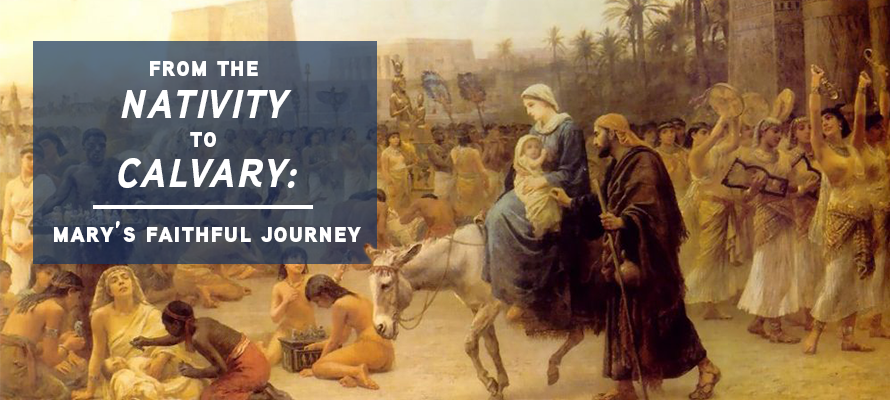
In those days a decree went out from Caesar Augustus, that the whole world should be enrolled. So, all went to be enrolled, each to his own town. And Joseph too went up from Galilee from the town of Nazareth to Judea, to the city of David that is called Bethlehem, because he was of the house and family of David, to be enrolled with Mary, his betrothed, who was with child.
I can’t recall an image of the Virgin Mary where she isn’t portrayed as peaceful, calm, and full of grace. Even at Calvary, in her deepest sorrow, she is resolute. And though Luke tells us she is “greatly troubled” as she tries to discern the message of the Angel Gabriel who says, "Greetings, O favored one, the Lord is with you!” she is composed. Even as he says, "Behold, you will conceive in your womb and bear a son…the Son of God,” Mary calmly inquires, "How will this be, since I am a virgin?"
Accepting the angel’s explanation that “nothing will be impossible with God,” Mary eloquently responds, "Behold, I am the servant of the Lord; May it be done unto me according to your word."
That’s a lot to take in and a lot to commit to. But can you imagine just a few months later, newly betrothed and nine months pregnant, being told you must take a difficult journey by donkey through dangerous territory? Yet once again, Mary takes it in stride.
In Palestine, Caesar’s census required families to register in the town of their tribal origin rather than in the town where they lived. Since Joseph was a descendent of the House of David, this meant that he and his pregnant wife had to travel from Nazareth to Bethlehem, which was about 70 miles.
Today, healthy pilgrims walk this distance in four to five days, averaging 15 to 20 miles a day. Joseph and Mary, however, probably began their journey from Nazareth to Bethlehem a week to ten days before the birth of their son, as several factors would have made their trip considerably longer.
First, although travel through Samaria was the most direct route between Nazareth and Bethlehem, hostility between the Jews and Samaritans made travel in that country very dangerous. Joseph, seeking to protect his wife and unborn child, likely opts for an indirect route across the Jordan River and back into Judea farther south. This would add many miles and several days to their journey.
Secondly, because Mary is close to the end of her pregnancy, they probably had to travel much more slowly than normal to avoid harm or discomfort to both mother and child.
We know that when they finally complete their arduous journey, Mary and Joseph have no place to stay. The census has drawn many visitors to Bethlehem, and all the guest rooms are full. As a result, Mary gives birth to Our Lord in a stable, sheltered from the cold but surrounded by animals. After all that, Mary then has to welcome visitors in this unlikely nursery. When an Angel of the Lord shares the good news with shepherds in the field, they immediately respond, “Let us go to Bethlehem and see it for ourselves.”
Scholars say that Mary provided Luke with firsthand accounts for his Gospel. He mentions her more than any other biblical author and includes many direct quotations from Mary herself. Luke portrays Mary as a faithful and thoughtful woman who embraces God’s unexpected plan for her life. So, while scripture sometimes contains symbols and metaphors, I consider Luke’s account an accurate, historical record. I consider Mary a marvel. After a lengthy journey while nine months pregnant, giving birth in a barn, and an onslaught of immediate visitors, Luke recounts, “Mary kept all these things, reflecting on them in her heart.” Hail Mary, full of grace.



